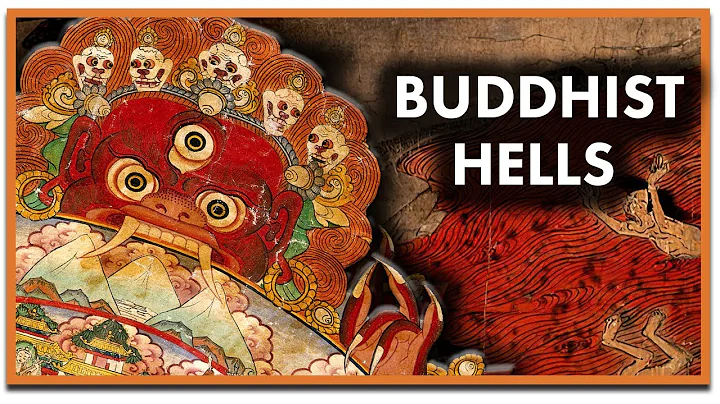Tang Dynasty There were two monks who made great contributions to Sino-foreign exchanges, namely Master Xuanzang and Master Jianzhen. Xuanzang HTML became a monk at the age of 212; Jianzhen HTML became a monk at the age of 214. Xuanzang is a monk from the north; Jianzhen is a monk from the south. Xuanzang went to the West to seek scriptures; Jianzhen went to the east to preach. Xuanzang went through 18 years of hardship to reach India; Jianzhen failed to travel east five times in 13 years and was blind, and finally arrived in Japan for the sixth trip to sea.

Jianzhen Dongdu map
1. Why did Jianzhen go to Japan? During the Tang Dynasty, China's splendid culture had a huge attraction to Japan, and Japanese students and monks came to the Tang Dynasty to study. In 742 AD, Japanese monks Rong Rui and Puzhao arrived at Daming Temple in Yangzhou, saying that the precepts of Japanese Buddhism were incomplete and monks could not take precepts according to the rules. They beg that the eminent monk Jianzhen of the Daming Temple went to Japan to teach "real" Buddhism and teach precepts to Japanese believers. Jianzhen and his disciples believed that the journey to Japan was not only long, but also the risk of sailing at sea was too high, and they firmly disagree with the master's crossing east. Jianzhen said, "This is a ritual, why cherish his life." In order to spread Buddhism, Jianzhen was determined to crossing east.
2. The first time to travel east. In 742 AD, Jianzhen led 21 disciples, Rongrui and Puzhao to build ships at Jiji Temple near Yangzhou to prepare for the eastward rush. At that time, the Japanese monk held the official letter from the Prime Minister Li Linfu . Therefore, the local officials in Yangzhou supported the monks from the East. Unexpectedly, a disciple of Jianzhen was angry because of the jokes inside his friends, and falsely accused Jianzhen and his party of building ships colluding with pirates and preparing to attack Yangzhou. This was a big deal because pirates were rampant back then, and the government was shocked to hear the news and arrested all the monks. Although the whole story was soon revealed, Jianzhen died in his first trip to the east.
3. The second eastward transition. After two years of full preparation, in early 744, Jianzhen led 15 monks, Japanese monks Rong Rui and Puzhao, as well as 85 craftsmen in the fields of "Creating and Writing Embroiderer's Writing and Writing Monument" hired by Jianzhen, and more than 100 people set sail. There are really unexpected situations in the world. Before Jianzhen's ship went out to sea, it was overturned by wind and waves at the estuary of the Yangtze River in . After waiting for a period of time for the repair period, I went out to sea again. The boat was pushed by the strong wind and waves. After Jianzhen and others were rescued, they were transferred to Mingzhou (now Ningbo, Zhejiang) Ashoka Temple , and the second ferry to the east ended. Jianzhen preached in temples around Zhejiang, which was equivalent to becoming a visiting professor.
4. The third time to travel east. Jianzhen's determination to travel east was strong and unshakable. After Jianzhen finished his tour and returned to Ashoka Temple, he was preparing to travel east again. But the monks of Yuezhou thought that Buddhist masters like Jianzhen should not go to Japan, so they interfered with it and accused the Japanese monks of "tempting" Jianzhen to Japan. With the intervention of local governments, Jianzhen's third trip to the east ended.
5. The fourth time to travel east. Jianzhen's intention to go to Japan was decided. He thought that since he failed to go to sea three times in the area of , Jiangsu and Zhejiang, , he changed his strategy and believed that the shipbuilding goal was large and time-consuming, so he decided not to build a ship, but to buy a ship from Fuzhou to go to sea. After everything was ready, Jianzhen led more than 30 people to set off from Ashoka Temple. As soon as he walked to , Wenzhou , he was stopped again. What's going on? It turned out that it was Jianzhen's disciple Lingyou who was worried about his master's safety and asked the Yangzhou government to stop him. The interview in Huainan was moved by Lingyou's sincerity and sent someone to intercept Jianzhen and his party back to Yangzhou in Wenzhou, and the fourth time the eastward journey failed.
6. The fifth time to travel east. Japanese monks Rong Rui and Puzhao came to the Tang Dynasty to invite Chinese monks to Japan. Although more than a dozen years have passed, they have never given up their efforts. In 748 AD, they came to Daming Temple in Yangzhou again and asked Jianzhen to cross the east. Jianzhen then led 14 monks and 21 sailors to set off from Chongfu Temple at the end of June and waited eastward for a good wind. After leaving the estuary of the Yangtze River, due to climate reasons, Jianzhen stayed in the Zhoushan Islands for several months before going to sea.Unexpectedly, in the vast East China Sea, the ship was exposed to strong winds and waves, lost its direction, and finally got ashore after drifting on the sea for 16 days. However, after getting ashore, I learned that they had actually arrived in Sanya, Hainan! This is not what? Jianzhen, who was upset, moved into Dayun Temple.

Jianzhen traveled eastward
A year later, Jianzhen returned to Yangzhou, passing through Hainan, Guangxi, Guangzhou, Jiangxi, Jiangsu and other places. He was invited to preach countless ways wherever he went. During this period, the Japanese monk Rong Rui passed away, Puzhao said goodbye, and Jianzhen's proud disciple sat in the process. When he was about to part with Puzhao, Jianzhen vowed that he would not come to Japan and that his wish would not be fulfilled." At this time, Jianzhen was blinded by the long-term sea wind and sun exposure; the death of Rong Rui and his eldest disciple; coupled with the discomfort in the south and the fatigue of travel, Jianzhen was blind and his fifth trip to the east ended tragically.
7. The sixth time of the eastward journey. Although the fifth trip to the east failed, this special opportunity made Jianzhen travel to half of China, so it became famous. Jianzhen changed from a high monk to a famous monk, and the Japanese Buddhist community's desire to invite him was even stronger. In 753 AD, Japan sent Tang envoys Kiyoshikawa, Yoshibe Shinbe, Chao Heng and others to Yangzhou and beg Jianzhen to cross the east again. Jianzhen, who was blind, took a boat to Huangsipu, Suzhou, and then transferred to the Japanese , sending the Tang envoy ship, leading 24 people to sail to sea for the last time. A month later, he arrived in Satsuma, Japan, and his sixth rush to the east was finally successful.
8. Appreciation of achievements. After arriving in Japan, Jianzhen was treated with a grand courtesy from Emperor Kokan. After arriving in Nara, he was named "The Master of the Ding". Emperor Xiaoqian arranged for Jianzhen to be responsible for regulating the Japanese monks to eliminate the phenomenon of hiding Buddhism that was common in Japanese society at that time and to evade labor taxes. In 756, Jianzhen was named the "Great Monk Capital" and commanded all monks and nuns in Japan, thus establishing a formal precept system in Japan.

Tangzhaoti Temple
Junren Emperor After he ascended the throne, he gave the name "Tangzhaoti Temple" to the temple hosted by Jianzhen. Emperor Chunren also issued an order to allow Japanese monks to go to Tangzhaoti Temple to study before taking the precepts. Therefore, Tangzhaoti Temple was the highest institution of Buddhist studies in Japan at that time. On May 6, 763, ten years after arriving in Japan, Jianzhen passed away at Tangzhaoti Temple. Before his death, his disciples stood up with lacquer statues for Jianzhen's shadow. This was one of the few real-life statues in Japan. They were designated as Japan's first-class national treasure and are still preserved in Tangzhaoti Temple in Nara, Japan. In 1980, Jianzhen Dry Paint, who had been living in Japan for more than 1,200 years, returned to Yangzhou to "visit relatives" for the first time.

jianzhen dry paint like
Jianzhen East has great historical significance, promoted the exchange and development of China-Japan culture, enhanced the friendship between the peoples of China and Japan, promoted the wider spread of Buddhism in East Asia, and had a positive and far-reaching impact on the development of Japan's religious and cultural undertakings.







![[English] Who Am I - Lecture 1 - Ven. Guan Cheng - DayDayNews](https://i.ytimg.com/vi/KU0fUs2It5o/hq720.jpg?sqp=-oaymwEcCNAFEJQDSFXyq4qpAw4IARUAAIhCGAFwAcABBg==&rs=AOn4CLDFpQUN_QwRfC7bmP4sUadq-RcYdg)
![A Moving Masterpiece 清明上河图 [English narration] - DayDayNews](https://i.ytimg.com/vi/kxff-4GktOI/hqdefault.jpg?sqp=-oaymwEcCOADEI4CSFXyq4qpAw4IARUAAIhCGAFwAcABBg==&rs=AOn4CLBtHGLeUpJNCYDJYnZTuISQ1N5Vag)


